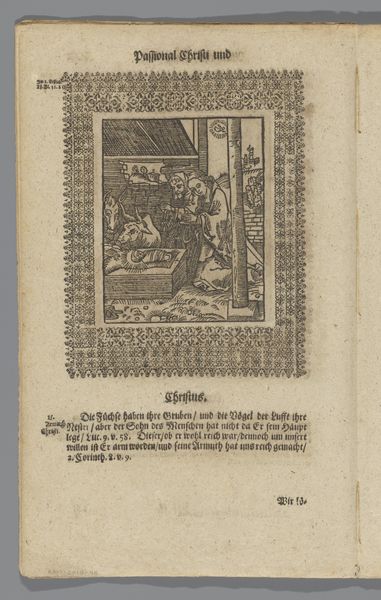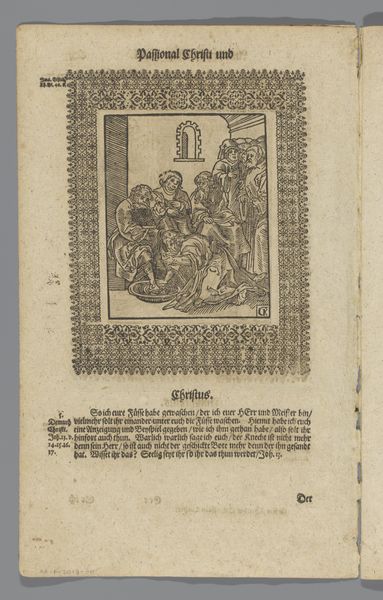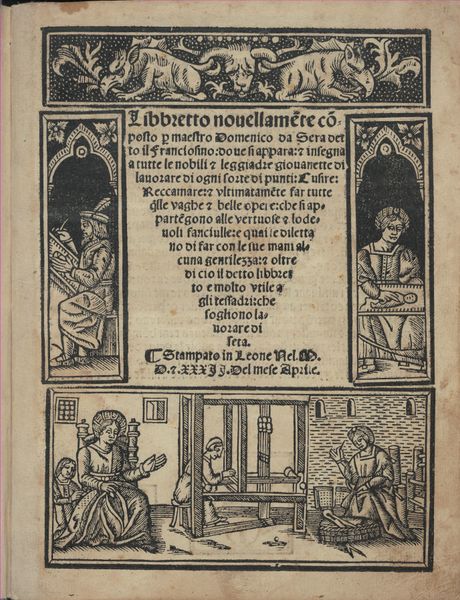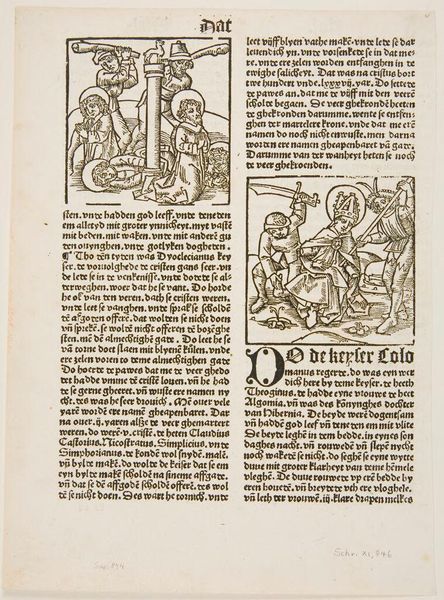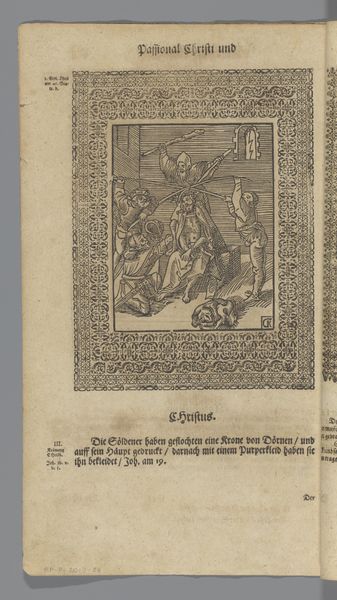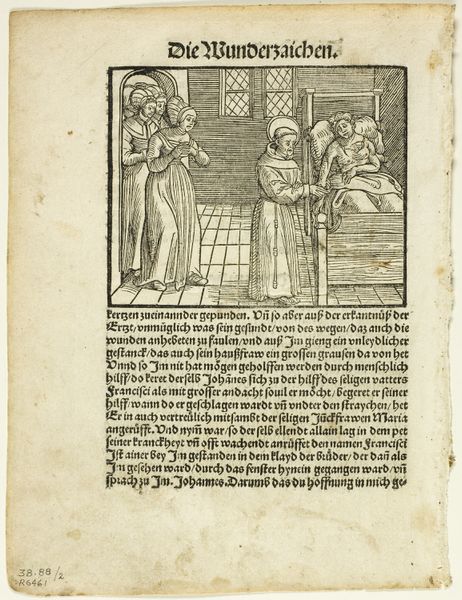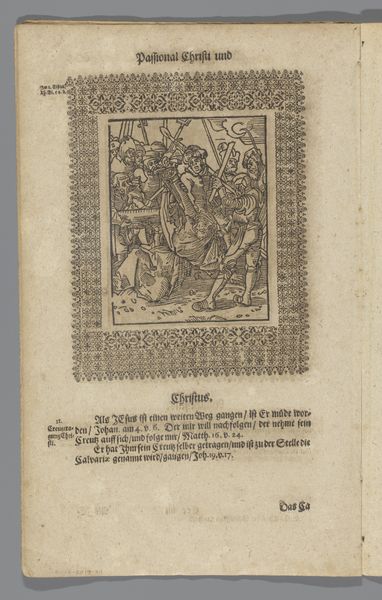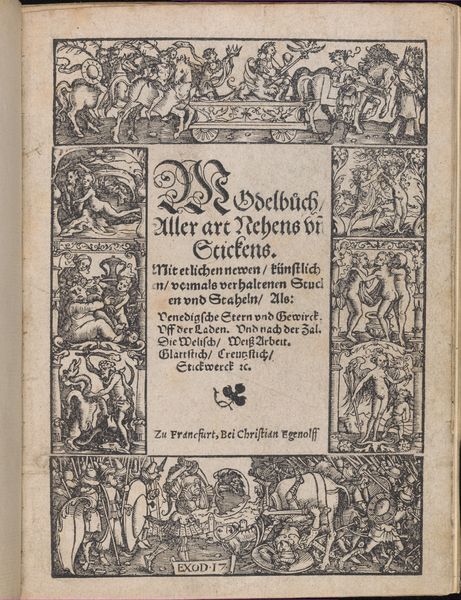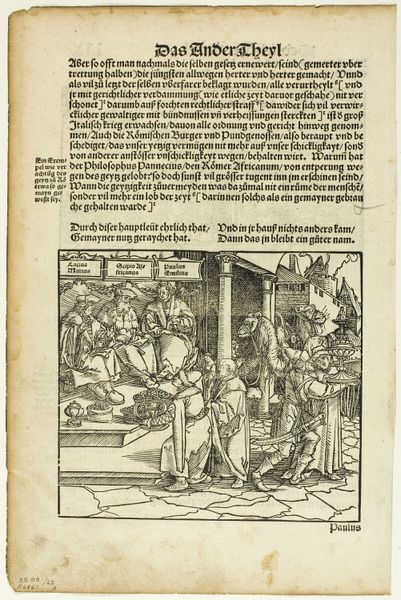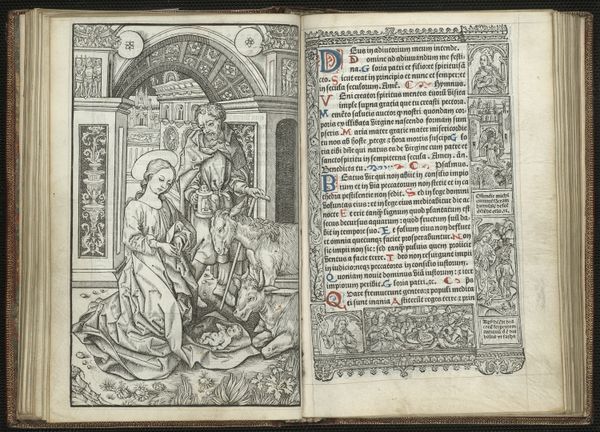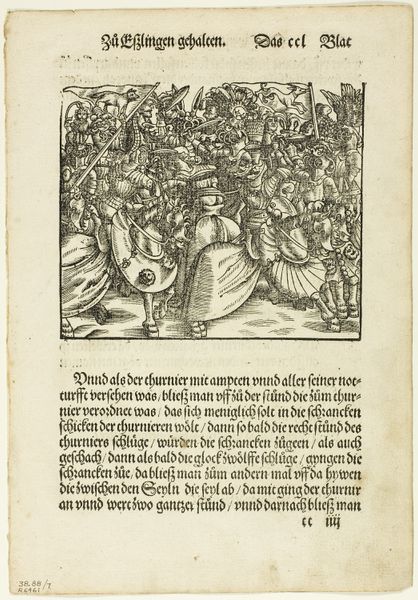
Cathechismus. That is to say a shorte instruction into Christian Religion 1548
0:00
0:00
drawing, print, woodcut
#
drawing
#
medieval
#
narrative-art
# print
#
book
#
woodcut
Dimensions: 6 x 3 3/4 x 1 3/8 in. (15.2 x 9.6 x 3.5 cm)
Copyright: Public Domain
Curator: This is a page from *Cathechismus. That is to say a shorte instruction into Christian Religion,* dating back to 1548. The image and the block of text are executed as a woodcut. What strikes you first about it? Editor: Well, immediately the crude but powerful graphic quality—the sharp contrast and bold lines give it a directness. The composition is simple, yet the message is clear: instruction and faith. It almost feels like propaganda! Curator: And in that way, it certainly reflects its time. Think about the materials. The paper, the ink, and the wood—each component embodies a specific moment in the history of book production and the Reformation. The woodcut medium was essential for mass communication. Editor: Exactly! And how revolutionary that must have been to produce religious material more affordably. So who had access to this? How was this "instruction" shaping the ideologies, behaviors, and even class structures of the period? Curator: Those are precisely the right questions to ask. Books like these played a crucial role in shaping religious identities during a time of intense religious upheaval. And a drawing becoming a print enabled widespread circulation for instruction. Editor: The content clearly suggests efforts at ideological construction during the early years of the English Reformation, especially the visual culture associated with that moment. Also the image of a leader surrounded by what looks to be children – suggests an inherent claim for authority and tradition. Curator: Notice how the relative cheapness of woodcut printing made visual instruction accessible to a broader segment of society. What would once be contained to the elite was available to, presumably, many more people, and it becomes a part of the world outside the religious establishment. Editor: So it's not just about theology—it's about the politics and power structures embedded in material culture, like this modest yet incredibly significant woodcut. Thanks for sharing a glimpse into this world of early printed instruction. Curator: Likewise! There’s such power in those simple black lines, isn’t there? To think of how this one object contributed to the religious and cultural landscape of its time is simply fascinating.
Comments
No comments
Be the first to comment and join the conversation on the ultimate creative platform.

